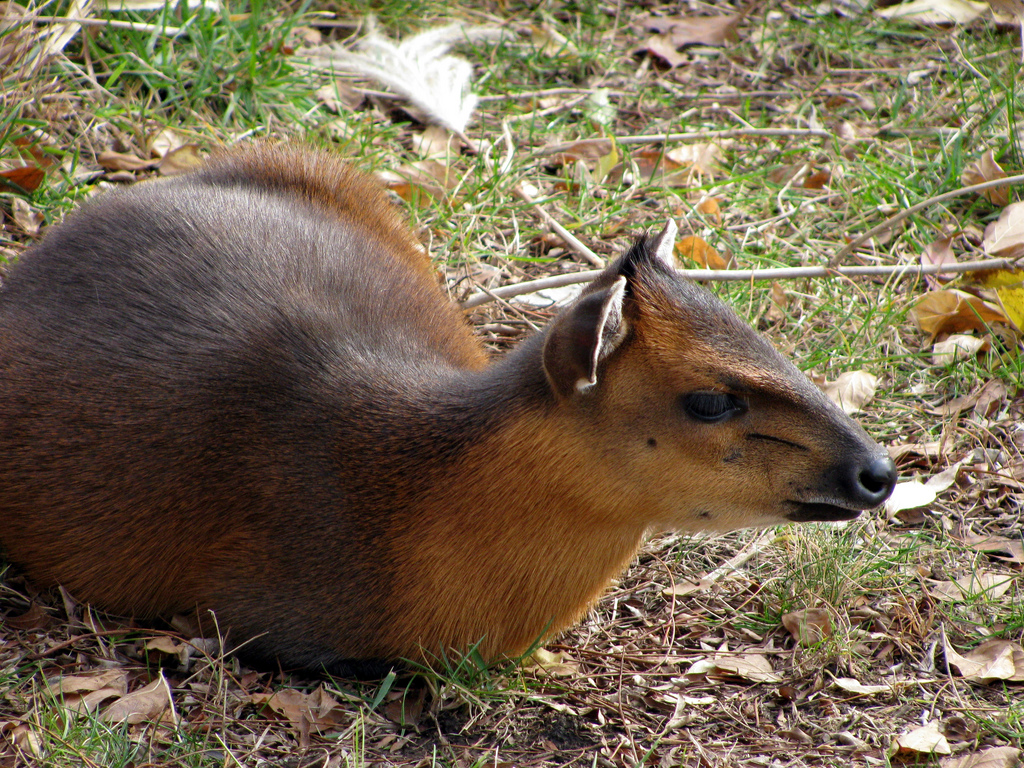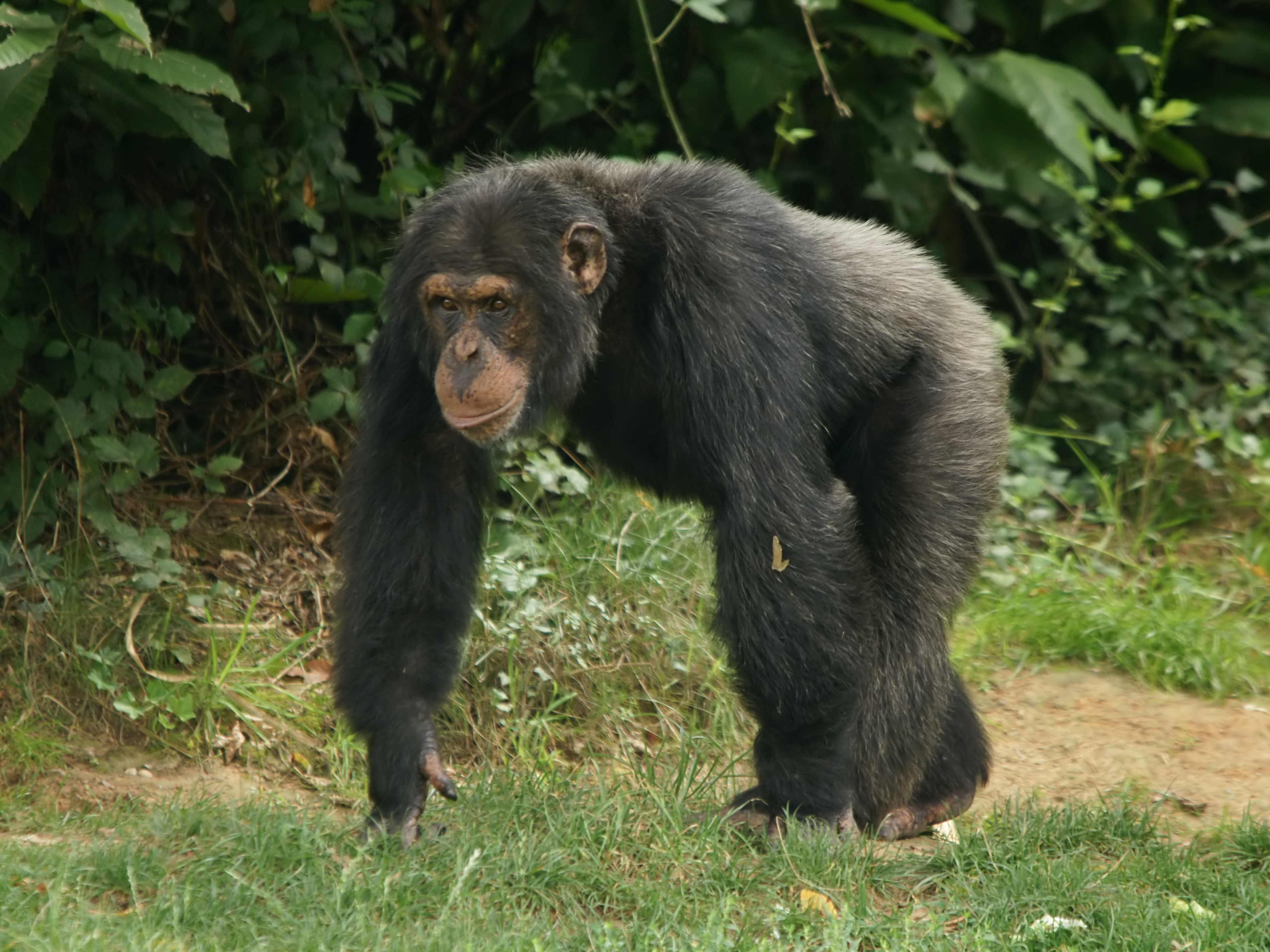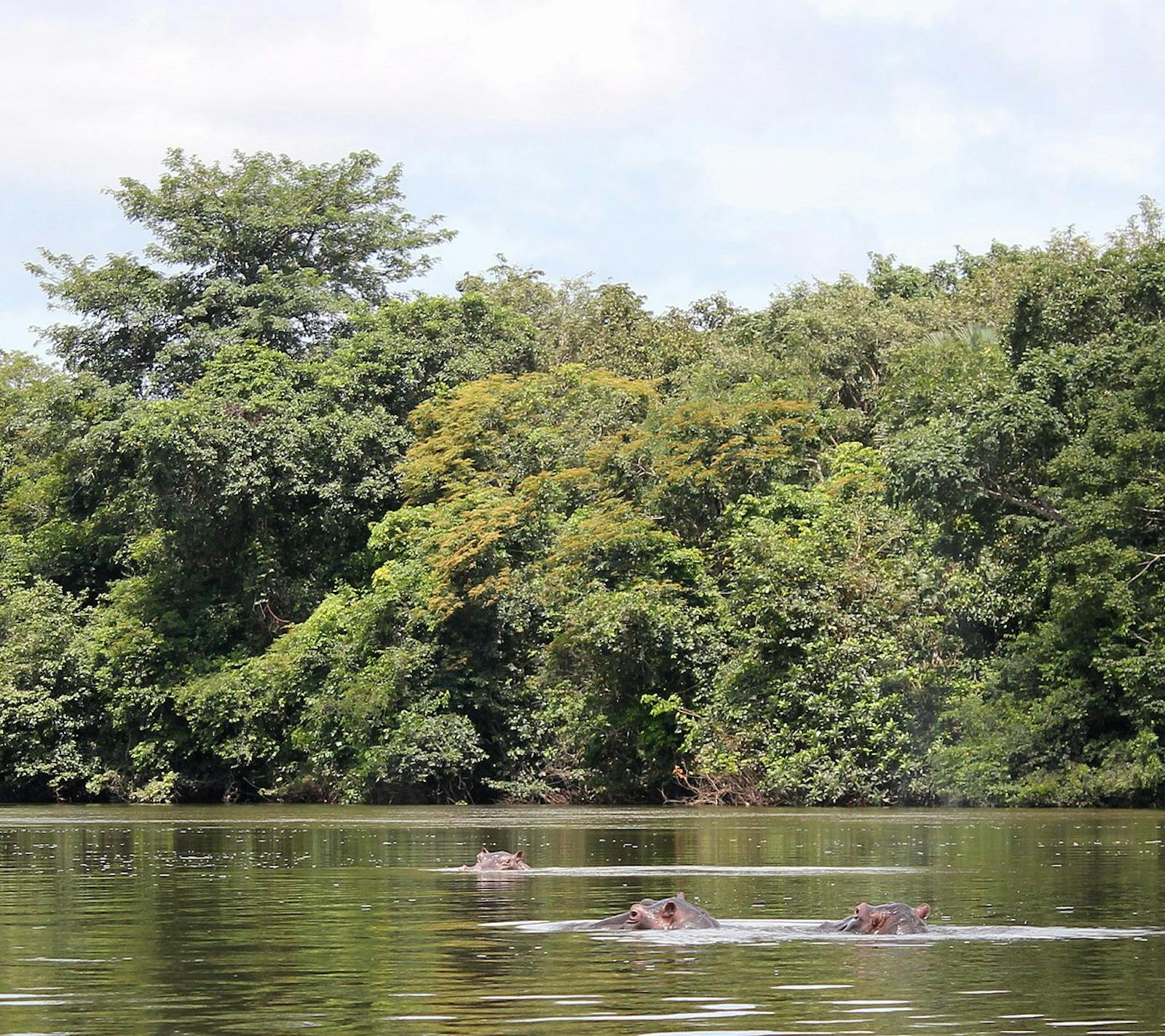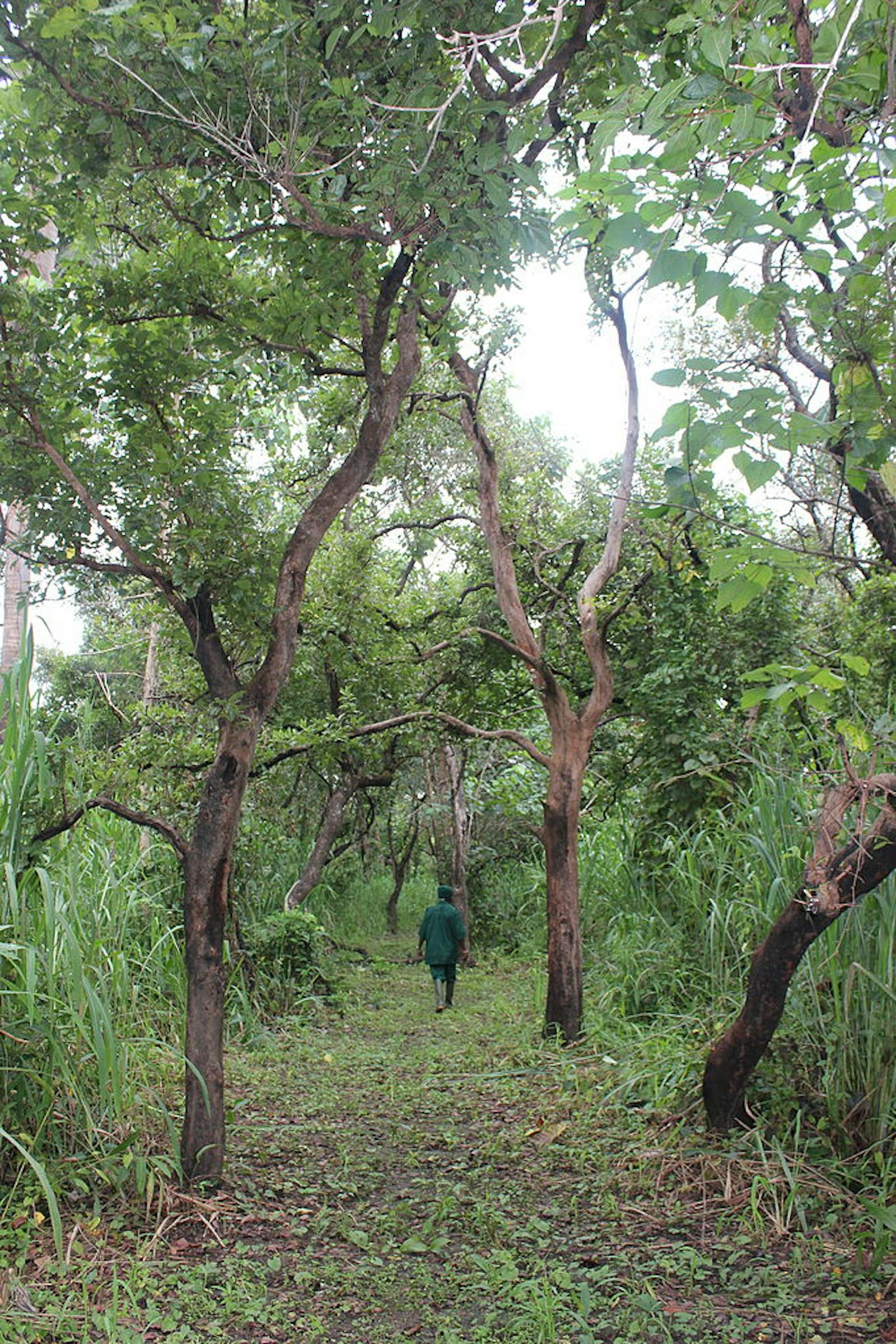Guinean Forest-Savanna
The ecoregion’s land area is provided in units of 1,000 hectares. The conservation target is the Global Safety Net (GSN1) area for the given ecoregion. The protection level indicates the percentage of the GSN goal that is currently protected on a scale of 0-10. N/A means data is not available at this time.
Bioregion: West African Coastal Forests & Savanna (AT19)
Realm: Afrotropics
Ecoregion Size (1000 ha):
67,509
Ecoregion ID:
44
Conservation Target:
17%
Protection Level:
10
States: Senegal, The Gambia, Guinea-Bissau, Guinea, Sierra Leone, Côte d’Ivoire, Ghana, Togo, Benin, Nigeria, Cameroon
Despite being illegal, hunting of the western chimpanzee still occurs for bushmeat, the pet trade, traditional beliefs, and the protection of crops. Due to the continuing threats from humans, this chimpanzee subspecies has been classified as critically endangered. They inhabit the forest patches of the Guinean Forest-Savanna ecoregion, which are scattered across the vast savanna plain found in between the humid forests of the Guinea-Congolian region and the dry savannas of the West Sudanian region.
The ecoregion runs east to west across West Africa, reaching the coast at the Dahomey Gap, a narrow strip of semi-arid habitats in eastern Ghana and Benin that separates the Guinean rainforests from those of the Congolian forest region. The landscape is typified by gently rolling plains with scattered inselbergs rising hundreds of meters above the plains, up to 1,500 m.

The flagship species of the Guinean Forest-Savanna ecoregion is the red-flanked duiker
The Niger River passes through the ecoregion, and the Senegal, Gambia, and Volta Rivers also drain large areas. This ecoregion lies within the humid tropical savanna zone with mean annual high temperatures ranging between 30-33°C, and lows ranging between 14-21°C. Annual rainfall averages 1,600-2,000 mm, but declines in the Dahomey Gap, parts of which receive 1,000 mm or less. To the north, there is a single rainy season of five to seven months peaking in August. In the southern portion rainfall is bimodal, with two rainy seasons of two to four months each separated by a short dry period in July or August. During winter months, the Harmattan—a dry northeastern wind—brings dust clouds from the Sahara.
The gallery and groundwater forests represent extensions of the drier types of Guineo-Congolian peripheral semi-evergreen forest. Tall grasses up to 4 m high characterize the savanna areas, including fire-tolerant species of the genera Andropogon, Hyparrhenia, and Pennisetum. Short grasses characterize the Dahomey Gap. Agricultural land covers around 40 percent of the ecoregion’s total area, with anthropogenic woodland types where tree species useful to people predominating, such as oil palm, locust bean and various figs.
The Guinean Forest-Savanna Mosaic forms the western half of White’s Guineo-Congolian/Sudanian regional transition zone. The uplands of Sierra Leone and Guinea support the endemic trees Bafodeya benna, Diospyros feliciana, and Fleurydora felicis.
The wide variety of habitat types support a high diversity of animals. Forest patches contain characteristic rainforest species, such as the African palm civet, lesser spot-nosed monkey, and Maxwell’s duiker along with species of conservation concern like western giant forest hog, white-thighed black and white colobus, and bongo which is endangered in West Africa.
Rarer species include the dwarf crocodile, lion, and red-flanked duiker. Several rare species are found in both forest and woodland or grassland habitats, including western chimpanzee and elephant. Rare wetland or riverine species include African manatee, spotted-neck otter, and sitatunga which is endangered in West Africa.
Two species of rodent are the only strictly endemic mammals in the region: Matthey’s mouse, found in Ghana, and Jackson’s fat mouse, found only in Ghana and Nigeria. The eleven species of strictly endemic reptiles include the ugly worm lizard known only from Guinea-Bissau, and the Gambia blind snake, found in The Gambia.

Western Chimpanzee
Most habitat types are highly fragmented and degraded across this ecoregion, especially in areas of high human population density. Remaining large habitat blocks are found mainly in protected areas or agriculturally marginal zones. Protected areas in this ecoregion include: Old Oyo National Park (Nigeria), Bui and Digya National Parks (Ghana), Badiar National Park (Guinea), and Marahoué National Park (Côte d’Ivoire).
There are also many ‘Sacred groves’—forest patches that are protected by social or cultural use restrictions—where humans may actively seek to improve the species richness by transplanting species between different groves.
Hunting and loss of habitat to agriculture or logging are the main threats to biodiversity. Hunting has extirpated most larger animals, and those that survive tend to be wide-ranging habitat generalists. While predatory species have been eliminated out of fear, or to protect people and property, other species are hunted to provide meat.
Because few tourists visit the protected areas of the ecoregion, they generate little income to fund their management. Instead, impoverished residents exploit wildlife to supply the bushmeat trade, governments permit logging concessions, and farmers clear forest habitats for farmland. Additionally, humans use fire both to flush game for hunting and to clear land for agriculture. Frequent fires may also alter fallow succession and the species composition of vegetation types by killing less fire-resistant species.
The priority conservation actions for the next decade will be to: 1) enforce wildlife laws combined with providing alternative livelihoods for local communities who rely on bushmeat; 2) implement activities to restore ecosystems and habitats; and 3) promote sustainable practices of land use for agriculture.
Citations
1. Burgess, N., Hales, J.A., Underwood, E., Dinerstein, E., Olson, D., Itoua, I., Schipper, J., Ricketts, T. and Newman, K. 2004. Terrestrial ecoregions of Africa and Madagascar: a conservation assessment. Island Press.
2. Lindsey, P.A., Balme, G., Becker, M., Begg, C., Bento, C., Bocchino, C., Dickman, A., Diggle, R.W., Eves, H., Henschel, P. and Lewis, D. 2013. The bushmeat trade in African savannas: Impacts, drivers, and possible solutions. Biological Conservation. 160, pp.80-96.
3. The State’s General Office of the Environment. 2015. Strategy and National Action Plan for the Biodiversity 2015-2020. Guinea-Bissau: The Republic of Guinea-Bissau.
4. White, F. 1983. The vegetation of Africa, a descriptive memoir to accompany the UNESCO/AETFAT/UNSO Vegetation Map of Africa (3 Plates, Northwestern Africa, Northeastern Africa, and Southern Africa, 1:5,000,000). Paris, France: UNESCO.





